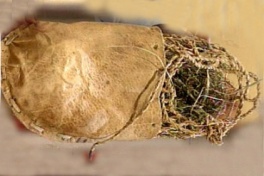Difference between revisions of "Tanning with fats and oils"
From www.leather-dictionary.com - The Leather Dictionary
| Line 50: | Line 50: | ||
! bgcolor=#eeeeee | [[Tanning leather|Tanning]] methods | ! bgcolor=#eeeeee | [[Tanning leather|Tanning]] methods | ||
|- | |- | ||
| − | | bgcolor=#ffffff align=center | [[Chrome tanned|Chrome tanning]] - [[Vegetable-tanned leather]] - [[ | + | | bgcolor=#ffffff align=center | [[Chrome tanned|Chrome tanning]] - [[Vegetable-tanned leather]] - [[Synthetic tanned|Synthetic tanning]] - [[Tanning with fats and oils]] |
|} | |} | ||
</center> | </center> | ||
Revision as of 15:45, 20 November 2016
An older tanning method is tanning with fats and oils. Therefore fat-rich animal substances such as brain, fish oil, sebum or marrow are used. This kind of tanning can also be done with soap, claw oil, yak butter or egg yolk. The advantage of fat tanning is that the fats are automatically present with the killing of the animals.
It is believed that already 5,000 years ago, leather for shoes, tent walls, straps and leather clothing had been preserved by fat tanning and subsequent smoking.
Leather thousands of years ago: Shoes and tent walls.
Additional information
- Tanning
- Tannins
- Chrome tanning
- Vegetable tanning
- Synthetic tanning
- Brain tanning
- Chamois leather
- Tawing with alum
Videos about the leather production
The leather production in a modern tannery.
| Tanning methods |
|---|
| Chrome tanning - Vegetable-tanned leather - Synthetic tanning - Tanning with fats and oils |










 a kotori web solution
a kotori web solution